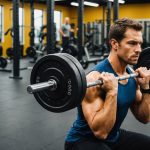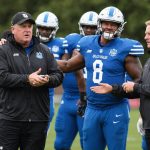Reviving the Past: Discovering Traditional British Martial Arts Still Thriving Today
Understanding the Roots of British Martial Arts
British martial arts have a rich and diverse history, often overshadowed by the more widely recognized Asian and European traditions. However, these arts have played a significant role in the country’s cultural and military heritage. To appreciate the current state of traditional British martial arts, it’s essential to delve into their historical roots.
Historical European Martial Arts (HEMA)
Historical European Martial Arts (HEMA) encompass a broad range of combat systems that were practiced in Europe from the medieval period to the early modern era. These include sword fighting, stick fighting, and unarmed combat techniques. One of the most influential figures in the revival of HEMA is George Silver, an English gentleman who wrote extensively on the subject in the late 16th century. His work, “Paradoxes of Defence,” provides valuable insights into the theory and practice of martial arts in England during the Tudor period.
This might interest you : Best Dietary Supplements for UK Martial Artists: Safe and Effective Choices Explored
Traditional British Martial Arts Today
Despite the passage of time, many traditional British martial arts continue to thrive, thanks to the efforts of dedicated practitioners and historians.
Bartitsu
Bartitsu, a hybrid martial art developed in the late 19th century by Edward William Barton-Wright, is a prime example. This system combines elements of jujutsu, boxing, stick fighting, and French savate. Although it gained popularity in the early 20th century, it saw a decline but has recently experienced a revival. Modern practitioners are drawn to its holistic approach to self-defense and its historical significance.
Topic to read : Boosting Punching Precision: How UK Boxers Can Leverage Modern Technology for Enhanced Accuracy
Singlestick and Cudgel Play
Singlestick and cudgel play are traditional British martial arts that involve stick fighting. These arts were popular in the 18th and 19th centuries and were often taught in schools and military academies. Today, they are practiced by historical reenactors and martial arts enthusiasts who appreciate their practicality and historical value.
Key Figures and Their Contributions
Several key figures have played crucial roles in the preservation and revival of traditional British martial arts.
George Silver
As mentioned earlier, George Silver was a pivotal figure in the documentation of English martial arts. His writings not only provide historical context but also serve as a guide for modern practitioners. Silver’s work is particularly notable for its critique of Italian rapier fencing, which was gaining popularity in England during his time. He argued that traditional English weapons and techniques were more practical and effective.
Ben Miller
Ben Miller, through his work with Physical Culture Historians, has been instrumental in reviving historical exercise methods, including martial arts. His focus on holistic health and the use of historical equipment like Indian clubs has helped to reintroduce these practices to a modern audience. Miller’s research and publications have been invaluable in the preservation of traditional martial arts.
Training and Practice
Training in traditional British martial arts is as rigorous and rewarding as it is historically significant.
Training Methods
- Historical Accuracy: Modern practitioners often focus on historical accuracy, using original texts and illustrations to guide their techniques.
- Physical Conditioning: Training includes physical conditioning to build strength, agility, and endurance, similar to the methods used in the past.
- Sparring and Drills: Sparring and drills are essential components, allowing practitioners to apply their skills in a practical setting.
- Workshops and Seminars: Regular workshops and seminars are held to share knowledge and techniques among practitioners.
Practical Advice for Beginners
For those interested in learning traditional British martial arts, here are some practical tips:
- Find a Reputable School or Instructor: Look for schools or instructors who specialize in historical martial arts.
- Start with Basic Techniques: Begin with fundamental techniques and gradually build up to more complex movements.
- Focus on Historical Context: Understand the historical context of the martial art you are learning to appreciate its full value.
- Join a Community: Connecting with other practitioners can enhance your learning experience and provide valuable feedback.
Cultural Impact and Modern Relevance
Traditional British martial arts have a significant cultural impact and remain relevant today.
Influence on Popular Culture
Martial arts, in general, have influenced popular culture, including films and literature. For example, the character of Sherlock Holmes is often depicted using Bartitsu, highlighting its enduring appeal. In the world of film, actors like Jackie Chan and Bruce Lee have popularized martial arts globally, though their styles are more Asian-oriented. However, the influence of traditional British martial arts can be seen in historical dramas and period pieces.
Self-Defense and Physical Fitness
One of the primary reasons people engage in martial arts today is for self-defense and physical fitness. Traditional British martial arts offer a unique blend of practical self-defense techniques and physical conditioning, making them an attractive option for those seeking a holistic approach to fitness.
Comparative Analysis of Traditional British and Asian Martial Arts
Here is a comparative analysis of traditional British martial arts and some well-known Asian martial arts:
| Martial Art | Origin | Primary Techniques | Historical Significance | Modern Practice |
|---|---|---|---|---|
| Bartitsu | Britain | Jujutsu, Boxing, Stick Fighting | Developed in the late 19th century | Revived in the 21st century |
| Wing Chun | China | Close-range combat, trapping | Developed in the Southern Shaolin Temple | Popularized by Bruce Lee |
| Jeet Kune Do | China/Hong Kong | Hybrid martial art, emphasizing individual expression | Developed by Bruce Lee | Global practice with various interpretations |
| Singlestick | Britain | Stick fighting | Popular in the 18th and 19th centuries | Practiced by historical reenactors and enthusiasts |
| Taekwondo | Korea | Kicking techniques, forms | Developed in the 1950s and 1960s | Olympic sport and widely practiced globally |
Quotes and Insights from Practitioners
- “The true science of martial arts means practicing them in such a way that they will be useful at any time, and to teach them in such a way that students will see their value in everyday life.” – George Silver
- “Historical martial arts are not just about fighting; they are about understanding the culture, the people, and the time in which they were developed.” – Ben Miller
- “Martial arts are not just physical exercises; they are a way of life. They teach discipline, respect, and self-control.” – A modern practitioner of Bartitsu
Traditional British martial arts, though often overlooked, offer a rich and rewarding experience for those interested in history, culture, and physical fitness. From Bartitsu to singlestick and cudgel play, these arts continue to thrive today, thanks to the dedication of practitioners and historians. Whether you are drawn to the historical significance, the practical self-defense techniques, or the physical conditioning, traditional British martial arts have something to offer everyone.
In the words of Bruce Lee, “Do not pray for an easy life, pray for the strength to endure a difficult one.” This philosophy is as relevant in the context of traditional British martial arts as it is in any other martial discipline, emphasizing the importance of perseverance and dedication in mastering these ancient arts.











